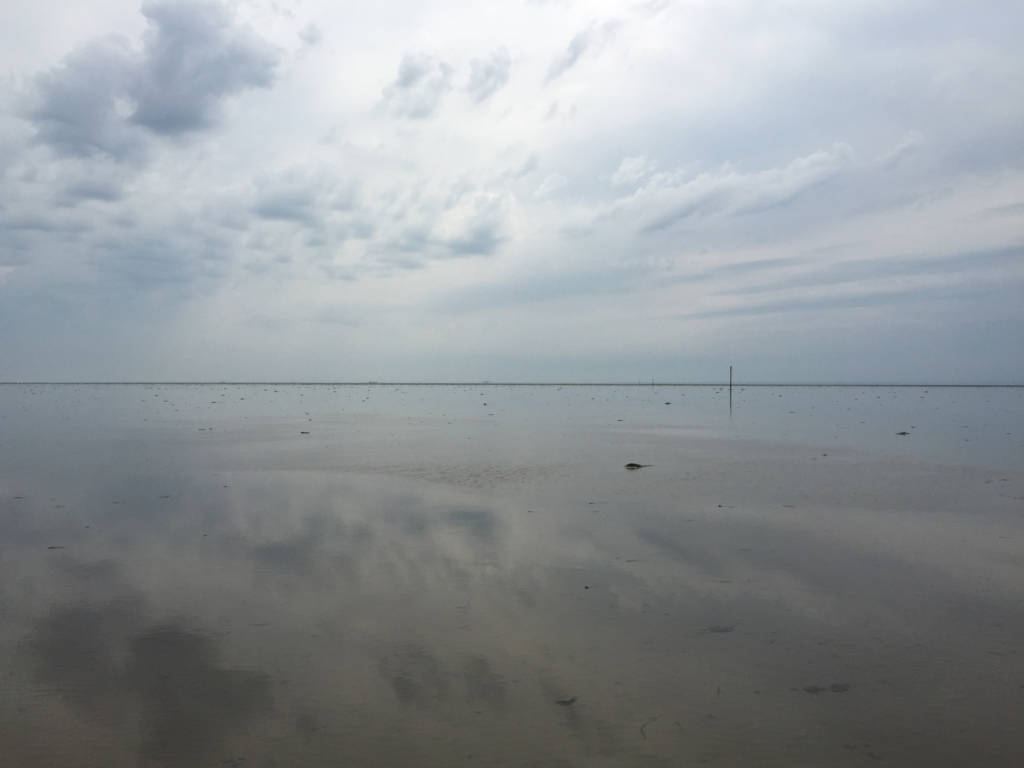I recently had the chance to walk the Broomway, a public byway six miles long that connects the foreshore at Maplin Sands to Foulness Island when the tide is out. When the tide is in, the way is drowned beneath the North Sea. If you are caught out there when the sea comes in, you are almost certainly going to die, as the current is strong and fast and the rivers Crouch and Roach form treacherous hidden whirlpools. Furthermore, access to the whole area is controlled by the military, who pop off artillery into the sands on a fairly regular basis. So, not very family friendly, if you get my drift.
It is easy to get lost out there, too, as the water runs out in strange, non-intuitive directions and the flat sands all around offer no bearing in misty weather or haze. Indeed, the only safe way to do it is by compass.
I love a spot of perilous geography, so how could I possibly say no? And I was very intrigued by the possibilities for my writing that such a landscape presented – it just screamed “murder pretending to be an accident”.
Following the Broomway
The walk begins in Essex, in Great Wakering, a few miles from Southend-on-Sea. So I was up at seven to get to Wakering Stairs, an elaborate journey that involved queuing up at an MOD roadblock for directions (the road is only open on certain days), in a portakabin behind farmers, while I admired the wonderful posters up on the office windows describing how to identify adders and treat their bites. I don’t particularly want to be bitten by an adder but I’m delighted that some are still out there in the world, presumably biting other people.
I was directed to a single lane road, flat and winding, that I was assured was the right way:
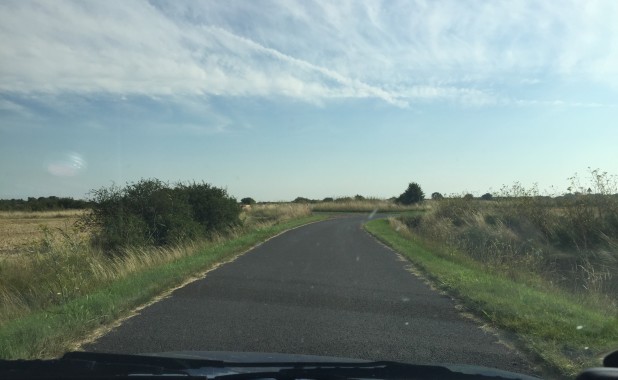
I reached Wakering Stairs, which of course weren’t actually stairs, and changed into the new wellies that soon proved themselves too short. It didn’t matter so much, as there we were, about to take the Perilous Road:
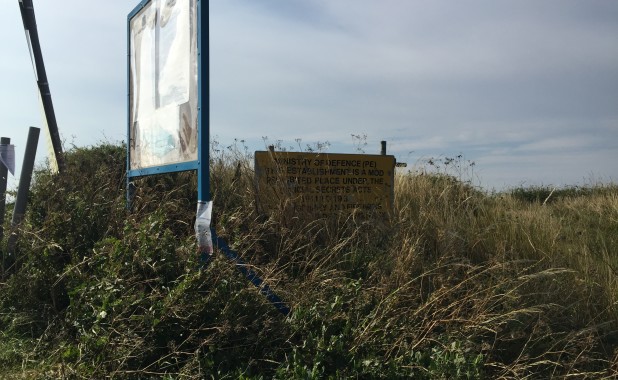
As we crested the little rise before the ramp, gathering around our guide, he talked a little bit about the surrounding landscape – the military base, the 17th century wooden trackway from old brickwork factories, the vague shapes of chimneys, towers and ships on the hazy horizon, looking like mirages:
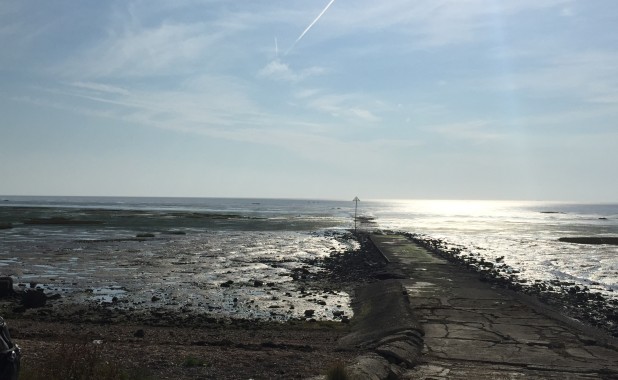
The walk is six miles, all told, and takes the best part of three and a half hours, particularly if you are not someone used to traveling in wellies.
But the road, the Broomway. Oh my God.
It was completely different to what I expected. Yes, it was undoubtedly dangerous, and parts of it more dangerous than others, full of unexploded bombs and forbidding command towers. The shifting sea and the land bore little correlation to one another:
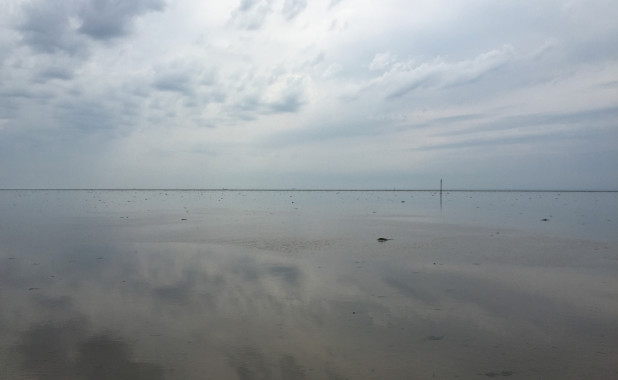
The striking thing though was its unearthly beauty, particularly later in the day when the tide went fully out. The sky and sea mirrored one another, and the people walking were also mirrored. When we first looked over the rise, people were exercising their dogs on the shimmering surface, and it seemed as though they were walking on water.
I had expected the sea to go thoroughly out and leave sand, but that never happened – everywhere was shallow lagoons and little inlets, agitated by a constant flickering current, and most of the way was about two or three inches deep in water at any one time:
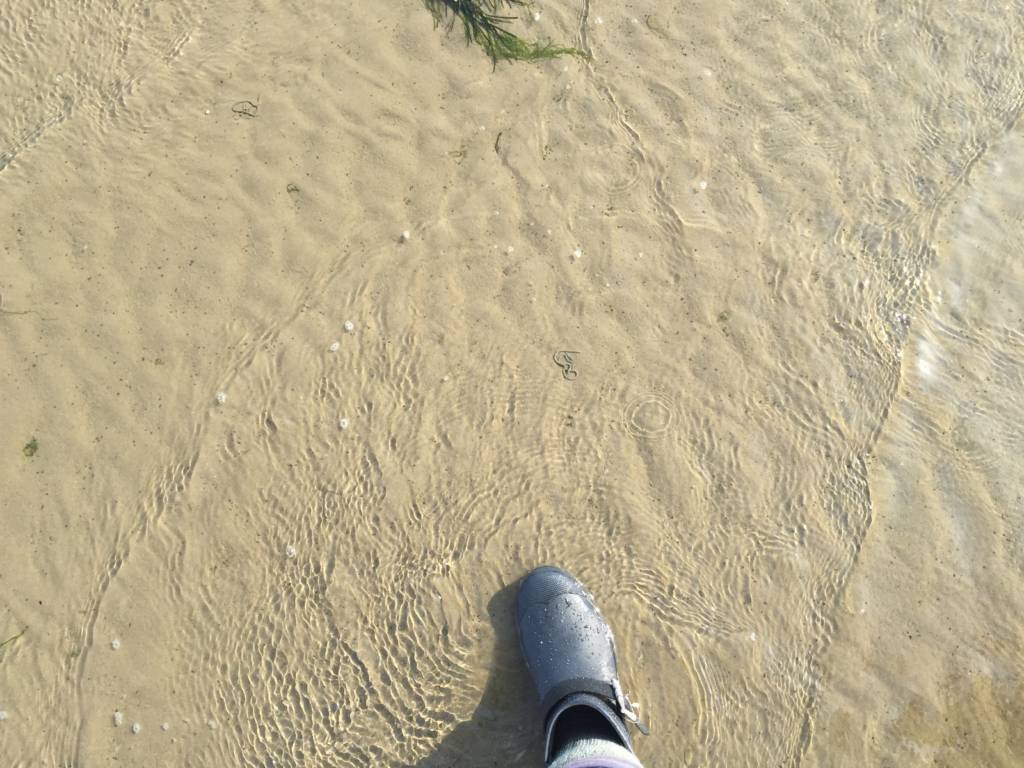
On the horizon, massive ships appeared in the mists between lost islands of towers and domes, and the guide told us that on a clear day you could perceive the earth’s curvature. On the land, in the distance, all was patchy dams and dykes dotted with fencing and vast, enigmatic military engineering. There were incinerators that looked like giant transistors and delicate crane like structures that were for testing ejection seats.
It was a beautiful place, and we came to a stop after two hours on a little outcropping of rock and crumbled concrete, spattered with barnacles and growing soft seaweed like green silky hair. I squeezed the water out of my socks and was told not to do this, but when I asked why, there was no answer. My friends offered me caramel shortbread which I accepted gratefully.
Anyway, the guide spoke some more about people who have been lost out there – fallen off barges, or their horse has been startled, or the weather overtook them. I took a few pictures and inspected the shellfish – mussels and oysters and the carcass of a single dead crab. Then we were off again, and the tide was at its lowest at noon, and the moving water grew still under the grey sky and the effect was utterly haunting, enchanted:
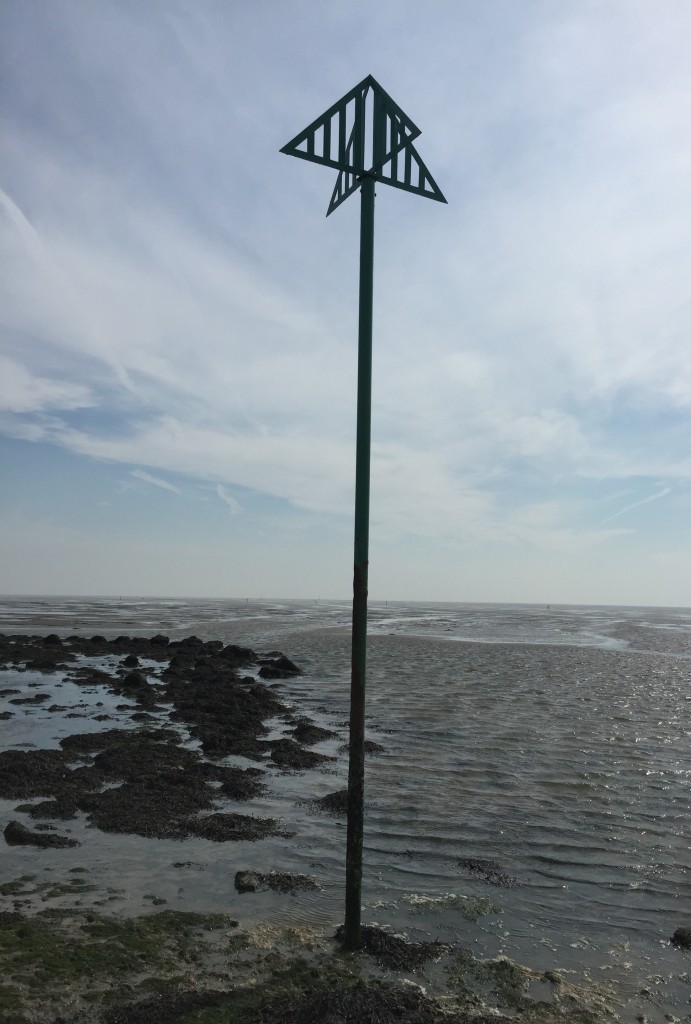
I got back to dry land tired but thrilled, flushed with the sea air and starving for some good old fashioned fish and chips. I would recommend the trip to any reasonably fit person with waterproof boots.
To find out more about walking the Broomway with a guide (which is very definitely the wisest way to do it!) then check out their website here.
